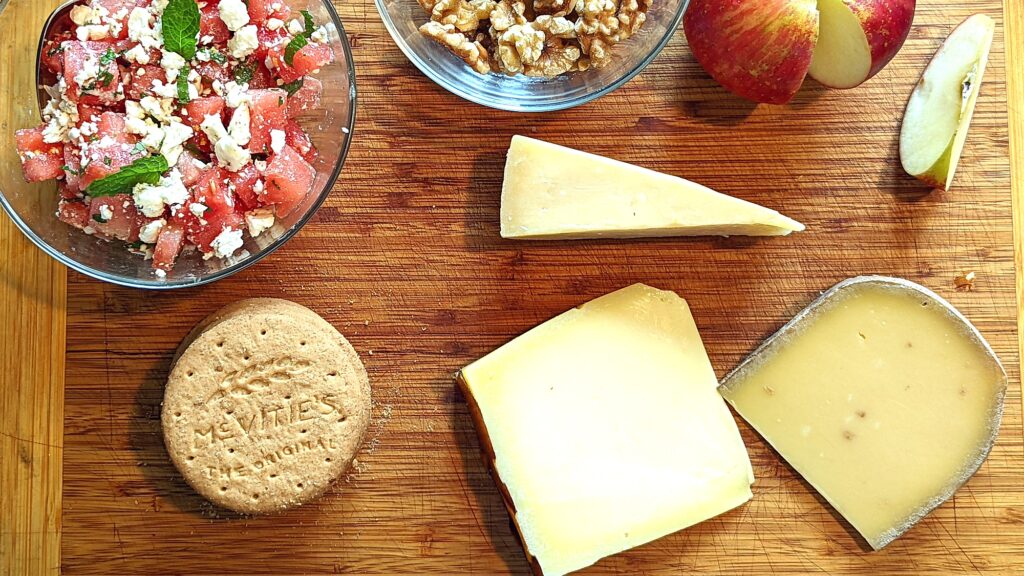
We hail from New England, home of some of the finest artisanal cheeses in America. But our whole region can’t begin to compete with Wisconsin. That state has 1,200 licensed cheesemakers who produce more than 600 varieties of cheese. They convert 90 percent of the state’s milk into cheese, accounting for half the specialty cheese production in the United States. Moreover, Wisconsin has a three-year certification program for Master Cheesemakers, who must already have a decade of experience making cheese. Once certified, they can place a distinctive blue Master’s Mark® on their products, indicating that they have supervised each step of the process.
So maybe it’s not a surprise that Wisconsin did so well in the last round of the American Cheese Society awards. Our last post showed some uses for an award-winning feta. The watermelon salad we made with that feta made one tangy complement for a cheese board. We added apple slices and walnuts and a stack of McVities Digestive Biscuits. Three hard cheeses combined with those garnishes for a nifty cheese board. Fall is coming, after all.
Saxony Alpine Style is a firm, nutty cheese made entirely from summer milk, i.e., milk from cows grazing on fresh green meadows. It’s the cheese center bottom on the cheese board at the top of the post. It’s not Swiss, Comté, Gruyère or any of those other alpine European cheeses. But it bears a family resemblance with its faint butterscotch and hazelnut notes.
Uplands Pleasant Ridge Reserve is another alpine style cheese made in the summer when cows are grazing on fresh pasture. The washed rind adds some nice savory flavors to the natural sweetness of the cheese. It’s on the lower right in the photo above.
Red Barn Vintage Cupola was a real surprise to us. The narrow triangle above is so small because we kept nibbling on the piece before it made it to the board. The makers describe it as the texture of Gouda with the flavor notes of aged parmesan. We disagree. It tastes much like an aged Gouda that hasn’t quite reached the alte käse stage with the formation of crunchy crystals. But talking about Gouda and parmesan is a mistake anyway. This is an original Wisconsin cheese. There’s plenty to be proud about in that nomenclature.
